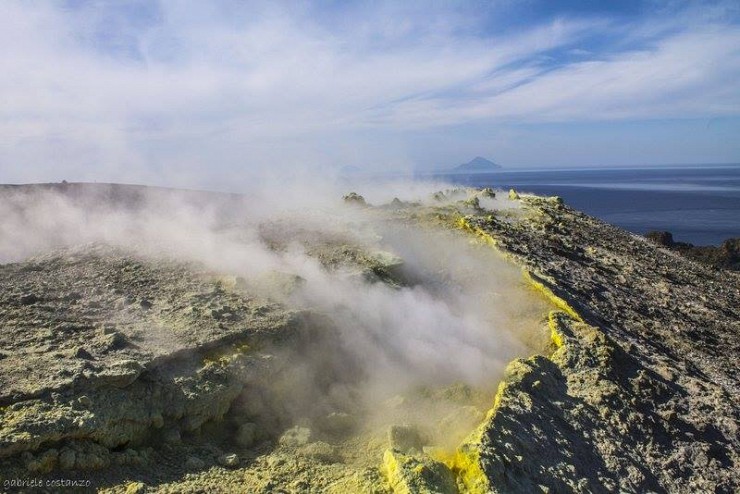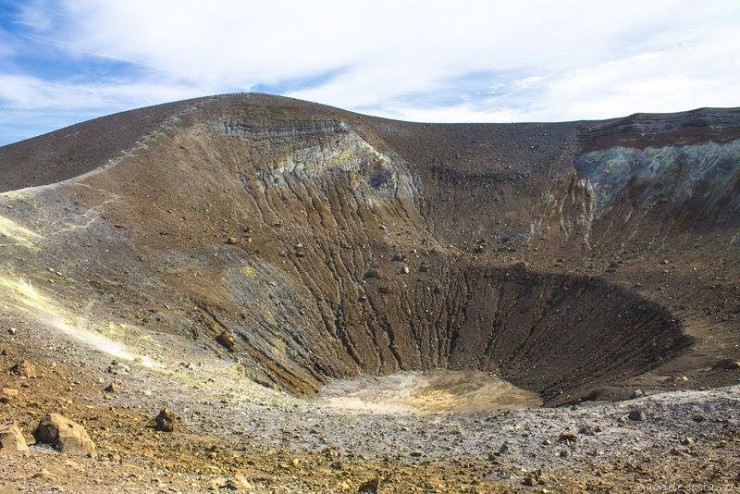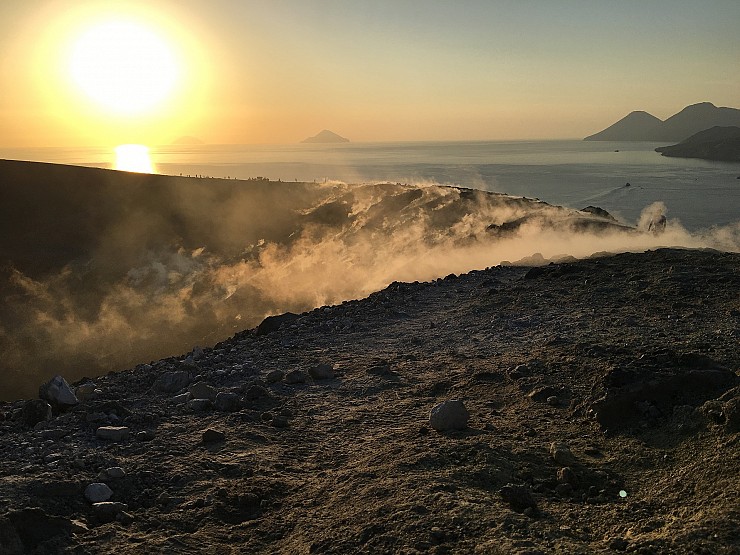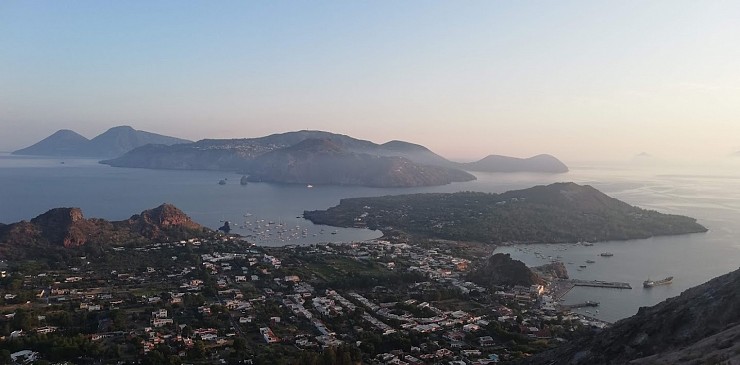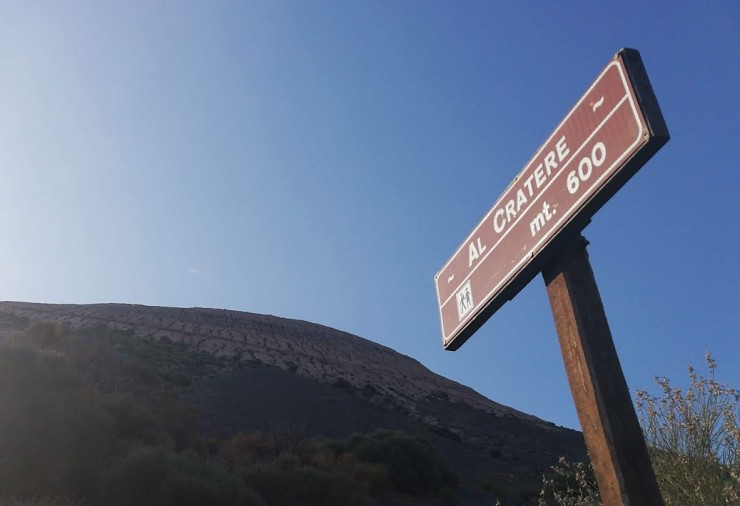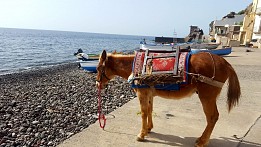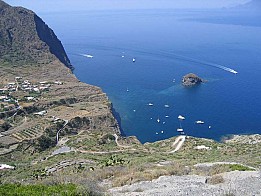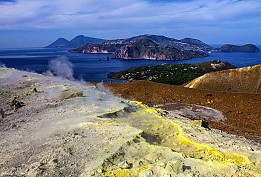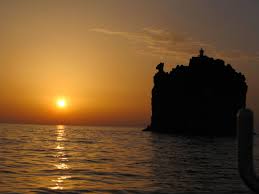To date it is not possible to go up to the Gran Cratere for safety reasons.
Duration: 3 hours - difficulty: easy
Between 1888 and 1890, the last eruption of the island's history involved dramatically the crater of La Fossa. The solfatara was quickly abandoned by the miners, when clouds of pyroclastic material and volcanic bombs have tumbled in the place where, inexplicably, a small village was built in the last decades of the 20th century. The volcano is still active, as evidenced by the strong activity of fumaroles with emissions of toxic gas and temperatures above 600° C. The visit to the top, anyway, is absolutely done without risks. The view embrace the whole archipelago and the wide caldera of Lentia. On the slopes, the steps of the gradual re-colonization by plant life are still detectable: the basal belt is covered by the endemic Tyrrhenian broom (Genista tyrrhena), while in the upper part few ephemeral and pioneer plants, that grow in winter and spring, can survive to the summer drought only as seeds; finally, in the proximity of the crater and the fumarole field there are not (or not yet) plants.













